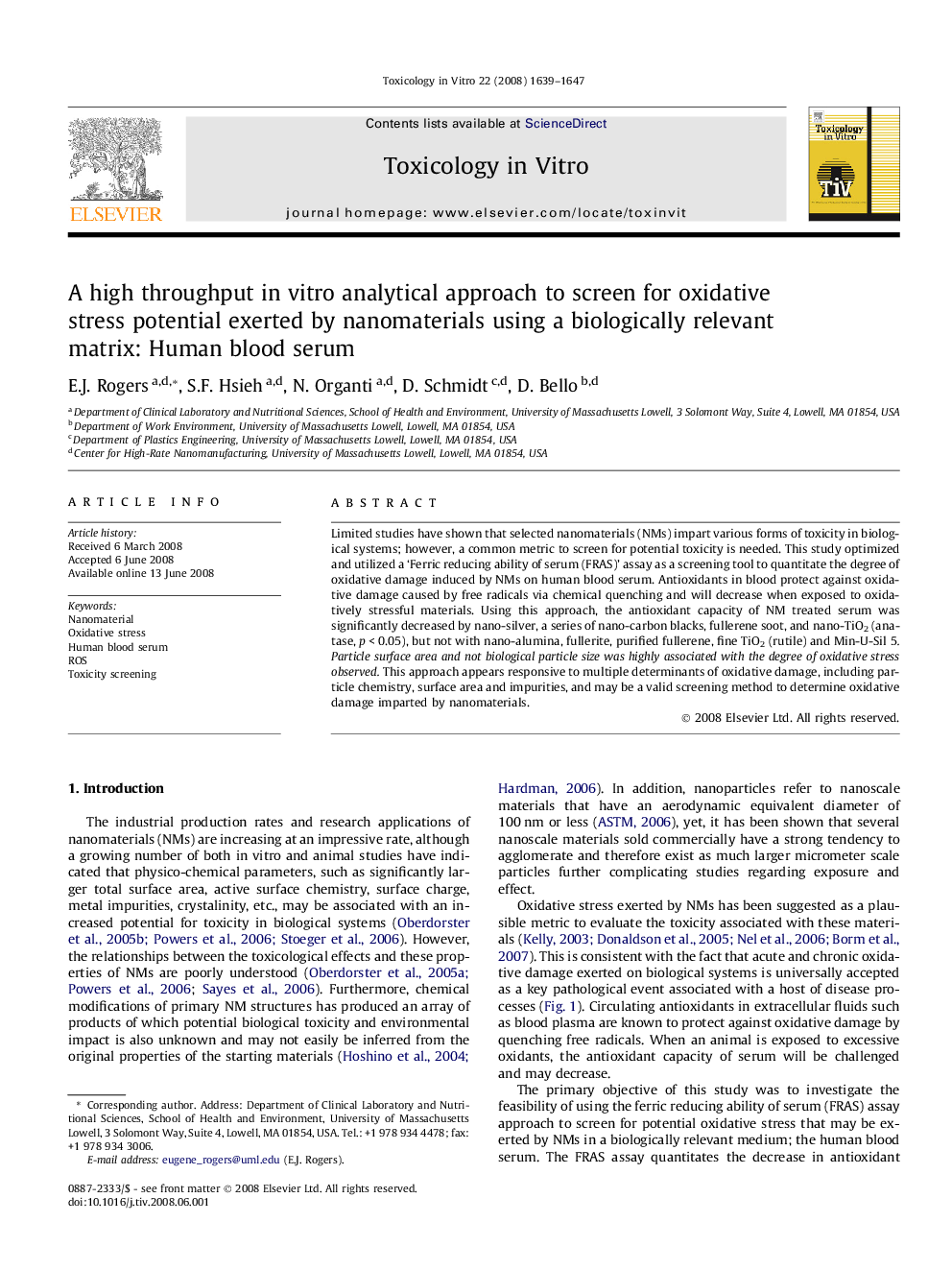| Article ID | Journal | Published Year | Pages | File Type |
|---|---|---|---|---|
| 2603112 | Toxicology in Vitro | 2008 | 9 Pages |
Abstract
Limited studies have shown that selected nanomaterials (NMs) impart various forms of toxicity in biological systems; however, a common metric to screen for potential toxicity is needed. This study optimized and utilized a 'Ferric reducing ability of serum (FRAS)' assay as a screening tool to quantitate the degree of oxidative damage induced by NMs on human blood serum. Antioxidants in blood protect against oxidative damage caused by free radicals via chemical quenching and will decrease when exposed to oxidatively stressful materials. Using this approach, the antioxidant capacity of NM treated serum was significantly decreased by nano-silver, a series of nano-carbon blacks, fullerene soot, and nano-TiO2 (anatase, p < 0.05), but not with nano-alumina, fullerite, purified fullerene, fine TiO2 (rutile) and Min-U-Sil 5. Particle surface area and not biological particle size was highly associated with the degree of oxidative stress observed. This approach appears responsive to multiple determinants of oxidative damage, including particle chemistry, surface area and impurities, and may be a valid screening method to determine oxidative damage imparted by nanomaterials.
Related Topics
Life Sciences
Environmental Science
Health, Toxicology and Mutagenesis
Authors
E.J. Rogers, S.F. Hsieh, N. Organti, D. Schmidt, D. Bello,
